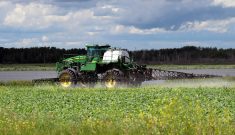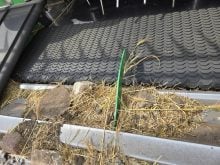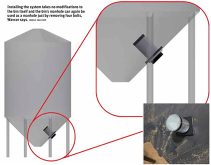LANGHAM, Sask. — Planning a storage system means being optimistic, future-focused, and strategic.
It isn’t something you should do when you realize you’ve got a big crop coming and not enough room to store it.
“It starts with a plan,” said Derek Johnson in the lee of the giant grain bin system AGI has built on the site of Ag in Motion, an outdoor farm show near Saskatoon.
“It’s a big project, and without a proper plan in place….”
So many problems can arise if grain storage systems are developed in a panicked rush, or without a long-term plan.
Read Also

Saskatchewan agriculture sector receives federal funding
PrairiesCan funding will assist in the continued growth of Saskatchewan’s ag research and manufacturing sectors.
Yet many are, because of the reality of farming. Most farms already have a lot of storage, a developed yard with truck access, and only small present problems the farmer would like to mitigate. Looking at the long term might not seem to be a priority during the rush of a busy crop year, but bin and handling decisions made today might stick with the farm for 40 years, so they’re worth thinking about, Johnson said.
First, a farmer needs to know what he can produce in a good year, and what he’s likely to be needing to store in coming years.
“Don’t plan for your average year. Or the drought year. Plan for your best year,” said Johnson.
“Don’t be forced to dump your grain.”
With a good assessment of reasonable needs for storage, a farmer can assess what their handling system could look like. For instance, many farms in wet areas might want “wet” bins connected to a grain dryer, from which grain can be conveyed into the dry bins. That all requires careful system engineering to make sure all the parts fit together right.
Critical to get right is truck, auger and machinery access to the system. Farmers can run into trouble when they fit the bins into the yard, but then find they have trouble loading or unloading grain, moving it, or having truckers access the yard and get to the grain they need to pick up. Figuring out exactly what each type of equipment, operation and trucker will need requires planning. An improperly oriented bin can become a management nightmare.
“Understanding which way they should be pointing can be confusing,” said Johnson.
If a farmer plans a big new system, will he also have to purchase a whole new handling system too, or is his present equipment enough? Will augers work, or should a new bucket elevator system be incorporated?
These are all challenging and expensive decisions. That’s why most new projects are done in pieces, although they’re anything but piecemeal. After careful consideration, the construction can take years.
“In the course of two, three, four years they’re building the system up,” said Johnson.
“It’s a phased approach. It’s not going to be done in one shot.”
That’s partly because of complexity. It’s partly due to the high cost of bins, concrete and handling equipment. It can be complicated arranging the bin crews and other labour needed to get the various parts of the system installed.
That means farmers have the time to get things right before they start, but they have to plan for that.
Critical to getting it right, is site preparation, Johnson said. Today’s 10,000-plus bushel hopper bottom bins carry a tremendous weight of grain.
A flat-bottomed bin with a 48-foot diameter weighs a bunch when it’s full.
“There’s a lot of downward force,” said Johnson.
Having a proper bed of gravel and concrete on a well-cleared site avoids problems later.
















